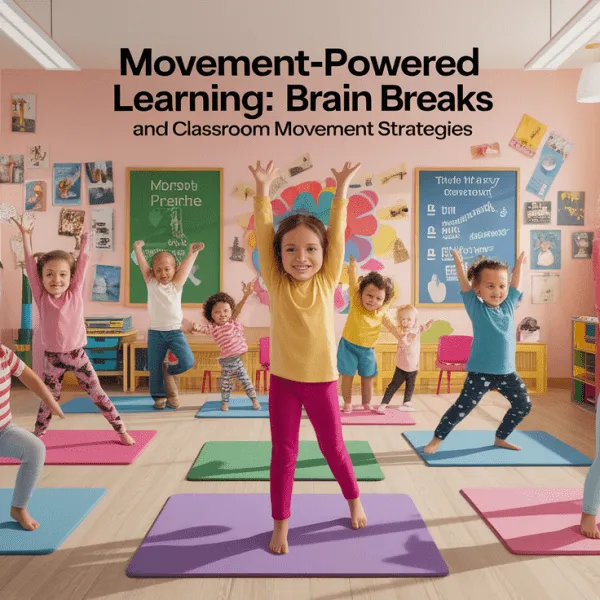Are you looking to enhance your lesson plans with ELD standards for English learners? Incorporating ELD standards in your lesson plans is a crucial step in supporting language development and academic success. In this article, we will explore how to write lesson plans incorporating ELD standards, teaching strategies for ELD, and the importance of aligning language instruction with content standards.
Writing lesson plans with ELD standards can be a daunting task. Before you begin, it’s important to familiarize yourself with the California ELD Standards, the California State Standards for English Language Arts and Literacy, the Next Generation Science Standards, and the California State Standards for Mathematics. These standards provide valuable insights into incorporating ELD into various subjects.
By integrating ELD standards into your lesson plans, you can effectively provide language support and engage English learners in meaningful ways. Through instructional strategies that promote active student engagement and checking for understanding, you can create a supportive learning environment for language development.
Join us as we delve into the intricacies of integrated and designated ELD, explore the content covered in ELD lessons, discuss proficiency levels, and discover how content standards can guide language learning. By the end of this article, you will have a comprehensive understanding of integrating ELD standards in lesson plans and be ready to enhance your teaching practices to better support English learners.
Understanding Integrated and Designated ELD
When it comes to supporting English learners in their language development and academic success, it’s crucial to understand the difference between integrated ELD and designated ELD. Both approaches play a vital role in helping students learn English and excel in their content areas.
Integrated ELD involves teachers providing language support during regular content area lessons. This approach focuses on helping English learners learn the content and academic language used in each lesson. It aligns with the content standards of the specific subject being taught, ensuring that language instruction is embedded within the context of the subject matter. It allows students to simultaneously develop their language proficiency and grasp of the subject.
On the other hand, designated ELD refers to a protected time during the school day when teachers provide explicit instruction in English language proficiency. This dedicated time allows teachers to focus solely on developing students’ language skills needed for content learning. It provides targeted language instruction that supports English learners in reaching the level of a native speaker and enables them to use English effectively to learn content and express their knowledge.
To summarize:
| Integrated ELD | Designated ELD |
|---|---|
| Language support provided during regular content area lessons | Explicit instruction in English language proficiency during a protected time |
| Aligned with content standards of the lesson | Focuses on developing language skills for content learning |
Content Covered in Integrated ELD Lessons
Integrated ELD lessons encompass a wide range of content areas to provide comprehensive language support for English learners. These lessons aim to develop language proficiency while engaging students in various academic subjects. Let’s explore the content covered in integrated ELD across different disciplines:
English Language Arts (ELA)
In ELA, integrated ELD focuses on enhancing reading, writing, fluency, vocabulary, and comprehension skills. Specific grade-level objectives are established to ensure targeted language development. By incorporating ELD strategies into ELA instruction, English learners can effectively navigate and excel in language arts.
Mathematics
The language demands in mathematics can be challenging for English learners. Integrated ELD lessons in mathematics provide language support for key mathematical concepts. Topics such as addition properties, unit fractions, data representation, and quadratic expressions are accompanied by targeted language instruction to aid English learners’ understanding and proficiency in math.
Science
Science lessons within integrated ELD aim to assist English learners in comprehending scientific vocabulary and concepts. Students develop their language skills while exploring areas such as physical science, life science, earth and space sciences, and engineering. By integrating language support into science instruction, English learners can actively engage with scientific content.
History-Social Science
Integrated ELD lessons in history-social science involve learning vocabulary related to historical events and analyzing the philosophy of government. English learners acquire the necessary language skills to understand and interpret social science concepts. By integrating language support into history-social science instruction, students can effectively communicate and participate in discussions related to the subject.
By covering these various content areas with integrated ELD, educators can support English learners’ language development, academic growth, and overall success. Offering language support within different subject areas helps students engage with academic content, develop their language proficiency, and achieve greater academic outcomes.
| Content Area | Language Support |
|---|---|
| English Language Arts (ELA) | Reading, writing, fluency, vocabulary, comprehension |
| Mathematics | Addition properties, unit fractions, data representation, quadratic expressions |
| Science | Physical science, life science, earth and space sciences, engineering |
| History-Social Science | Historical events, philosophy of government |
Instructional Strategies for ELD
When teaching English learners, it is crucial for teachers to employ effective instructional strategies that promote student engagement and ensure understanding. These strategies play a significant role in supporting language development and academic growth in ELD.
Student Engagement in ELD: Active student engagement is essential for language acquisition and vocabulary development. Teachers can incorporate the following strategies to enhance student engagement in ELD:
- Encourage collaborative learning activities, such as group discussions and pair work, to promote interaction and provide opportunities for students to practice language skills.
- Incorporate hands-on activities, visuals, and real-world examples to make the content relevant and engaging for English learners.
- Use technology tools, such as interactive whiteboards or educational apps, to create a dynamic and interactive learning environment.
Checking for Understanding in ELD: Regularly assessing students’ understanding of content and language is crucial in ELD lessons. Teachers can utilize various strategies for checking understanding:
- Use formative assessment techniques, such as exit tickets or quick quizzes, to gauge students’ comprehension and identify areas for further instruction.
- Provide immediate feedback to students, highlighting both their content and language comprehension, to guide their learning and address any misconceptions.
- Incorporate active listening and speaking activities, such as think-pair-share or role-plays, to assess oral language proficiency and comprehension.
By implementing these instructional strategies for ELD, teachers can create an engaging and supportive learning environment that enhances language development and ensures students’ academic success.
Proficiency Levels for ELD
ELD proficiency levels serve as a crucial tool for assessing students’ English language proficiency. These levels provide a framework to understand the extent of students’ language skills. Different terms are used to label these proficiency levels, including beginning, emerging, developing, expanding, and bridging.
Beginning Level in ELD
At the beginning level, students have limited or no understanding of English. They may struggle to comprehend and communicate effectively in English.
Emerging Level in ELD
Emerging level learners can understand and produce simple phrases or short sentences. While their language skills are limited, they are starting to comprehend basic English communication.
Developing Level in ELD
Students at the developing level understand more complex speech and can engage in conversations. However, they may still require some repetition or slower speech to fully comprehend and express themselves.
Expanding Level in ELD
Expanding level learners possess adequate language skills for day-to-day communication. They can engage in conversations, but may struggle with abstract concepts and academic language demands.
Bridging Level in ELD
Bridging level learners have acquired sufficient language skills to communicate appropriately for different purposes and audiences in various academic and social contexts. They can fully participate in content classes and express their ideas effectively in English.
| ELD Proficiency Level | Description |
|---|---|
| Beginning | Limited or no understanding of English |
| Emerging | Understanding simple phrases or short sentences |
| Developing | Understanding more complex speech, may require repetition |
| Expanding | Adequate language skills for day-to-day communication, struggles with abstract concepts |
| Bridging | Communicates appropriately for different purposes and audiences, fully participates in content classes |
Concepts Covered in Designated ELD Lessons
Designated ELD (English Language Development) lessons are designed to develop specific language skills and practices based on the proficiency levels of English learners. These lessons focus on promoting language growth and fluency in alignment with the identified language goals.
The concepts covered in designated ELD are determined by the proficiency level of the students and the language goals set for them. These language goals are based on the WIDA Language Expectations, which include language functions, features, and proficiency level descriptors. The language goals serve as a roadmap for instruction and provide a foundation for the language lessons in designated ELD.
During designated ELD lessons, students engage in activities that target the development of various language skills. These skills may include:
- Speaking and listening
- Reading comprehension
- Writing and composition
- Vocabulary acquisition
- Grammar and syntax
The instruction in designated ELD is carefully aligned with grade-level content standards to ensure that language instruction is grounded in the language required for students to succeed in their content classes. This integration of language and content standards helps English learners develop the language proficiency necessary to access and excel in academic content across subject areas.
Here is a table summarizing the concepts covered in designated ELD lessons:
| Language Goals | Language Skills |
|---|---|
| Speaking and Listening | Developing oral communication skills to engage in conversations, give presentations, and participate in academic discussions. |
| Reading Comprehension | Building reading skills, such as identifying main ideas, making inferences, and analyzing text structure. |
| Writing and Composition | Strengthening writing skills, including organizing ideas, using appropriate grammar and vocabulary, and writing for different purposes and genres. |
| Vocabulary Acquisition | Expanding vocabulary knowledge and learning strategies for acquiring new words in different contexts. |
| Grammar and Syntax | Understanding and applying the rules of grammar and syntax to communicate effectively. |
Using Content Standards to Guide Language Learning
Language educators recognize the importance of aligning language learning with grade-level content standards. By grounding language instruction in content standards, students have the opportunity to learn language within the context of real-world language use.
Language instruction should support the language students are expected to use in their content classes, ensuring that it is relevant and applicable to their academic needs. This integration of language and content standards creates a meaningful and purposeful learning experience for students, as they develop language skills while engaging with grade-level academic content.
Content standards provide the framework for language learning, highlighting the specific language expectations for each grade level and subject area. Teachers can rely on these standards to guide their language instruction, ensuring that it is aligned with the language required for students to succeed in their content classes.
By using content standards as a guide, teachers can design language units that integrate content-based learning and language development. This approach allows students to acquire language skills while also deepening their understanding of subject matter. It helps them make connections between language and content, reinforcing their comprehension and language proficiency simultaneously.
For instance, in a science class, students may learn the vocabulary and language functions related to the scientific method. By incorporating content standards into the language instruction, teachers can provide opportunities for students to engage in scientific discussions, write lab reports, and read scientific articles. This integrated approach ensures that students are not only developing their language skills but also gaining a deeper understanding of scientific concepts and practices.
The Benefits of using content standards to guide language learning
- Demonstrating Relevance: Content standards connect language learning to real-world applications, making it more meaningful to students.
- Building Academic Language: By integrating content-based language instruction, students acquire the vocabulary and language functions necessary for success in their content classes.
- Enhancing Language Proficiency: Grounding language learning in content standards allows students to practice using language in authentic and academic contexts.
- Deepening Content Knowledge: Integrating language and content standards helps students develop a deeper understanding of subject matter while improving their language skills.
- Facilitating Transfer: By using content standards, students can transfer their language skills across different subject areas, reinforcing their language proficiency.
Incorporating content standards into language learning ensures that students receive comprehensive and rigorous instruction that prepares them for academic success. By integrating language and content standards, teachers set a solid foundation for language development and support the overall growth of their students.
| Using Content Standards to Guide Language Learning | The Benefits of using content standards to guide language learning |
|---|---|
| 1. Align language learning with grade-level content standards | 1. Demonstrating Relevance: Content standards connect language learning to real-world applications |
| 2. Ground language instruction in content standards | 2. Building Academic Language: By integrating content-based language instruction, students acquire the vocabulary and language functions necessary for success in their content classes |
| 3. Use content standards to guide language units | 3. Enhancing Language Proficiency: Grounding language learning in content standards allows students to practice using language in authentic and academic contexts |
| 4. Deepening Content Knowledge: Integrating language and content standards helps students develop a deeper understanding of subject matter while improving their language skills | |
| 5. Facilitating Transfer: By using content standards, students can transfer their language skills across different subject areas, reinforcing their language proficiency |
Conclusion
Integrating ELD standards in lesson plans is a crucial step in supporting the language development and academic success of English learners. By understanding the difference between integrated and designated ELD and aligning language instruction with content standards, teachers can provide targeted language support and create meaningful learning experiences for their students.
Effective instructional strategies, such as promoting active student engagement and checking for understanding, play a vital role in ELD lessons. These strategies help foster student participation and ensure that students comprehend both the content and language being taught. By incorporating specific language goals and utilizing content standards, teachers can effectively plan and implement ELD units that cater to the diverse needs of English learners.
By incorporating ELD standards into their lesson plans, educators can enhance language development and support the overall academic growth of English learners. The integration of ELD standards empowers students to effectively communicate, comprehend, and express their content knowledge. This integration also ensures that language instruction is grounded in real-world language use, making it relevant and applicable to students’ academic needs.
In conclusion, integrating ELD standards in lesson plans is an essential practice that enables teachers to provide targeted language support and create an inclusive learning environment for English learners. By understanding the principles of integrated and designated ELD, utilizing instructional strategies, and aligning with content standards, teachers can facilitate significant language development and support the academic success of their students.




